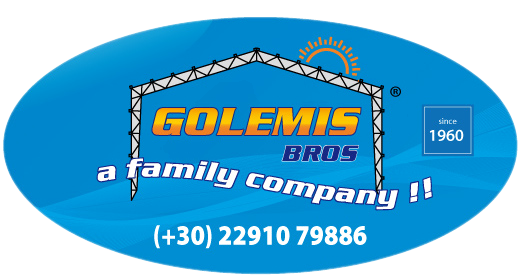
Our company continues for over 50 years, from 1958 onwards, the family tradition in the field of shading – covering spaces, having managed to make our name synonymous with the awning initially, and the related works that we added to our range later over the years.
Why choose us?
Choosing the right materials and the most experienced craftsmen is essential for the quality and high durability of your constructions. Here are some answers to the questions you may have!
No, but they will prolong their life Maintenance periodically required depending on the level and type of pollutants, as well as exposure (working environment). Generally a semi-annual cleaning over the surface of the fabric with water and a sponge is all that is required to give many years of life. Of course, frequent maintenance helps to prolong the life and condition of the structure. The stainless steel wire fittings, etc. generally have low maintenance costs.
A long time Low maintenance materials and smart design result in a long term shading solution. The fabrics are guaranteed for up to 15 years and have a life expectancy of more than 25 years. The membranes can be manufactured to withstand the worst weather conditions. Many of our outdoor structures have been around for more than 30+ years and counting.
Yes, we are specialized and have many years of experience! We are at the top of the shade market in terms of quality and this generally results in a product that is ideal for an indoor application.
We have travelled all over Europe and the Middle East, parts of Asia and around the Mediterranean Sea. All operations are controlled from our headquarters.
Of course!
The design of fabric structures is something we have perfected over many years.
The service allows our prospective customers to benefit from this experience.
The fee for the service depends on the details.
Not much, if at all! The choice of fabric is governed by many factors. A wide range of fabric types, weights and colours are available in the industry. A range of high quality fabrics are available. However, any fabric mesh has a number of disadvantages against a solid waterproof fabric, such as: -Being a mesh fabric, it traps dust and dirt resulting in a dirty and unsightly appearance – More regular cleaning intervals due to the above – The build-up of dirt allows mould to grow on the surface of the fabric, significantly shortening the life span In general, the construction, workmanship, material and techniques are all the same for mesh fabrics and waterproof fabrics. The cost of the material is the only difference. Some high quality knit fabrics can be more expensive than solid waterproof fabrics.
Three-dimensional curvature Curvature in 2 directions at any point on the surface of the fabric. Simpler form is a sharp 4-post structure with 2 diagonally opposite points high and 2 diagonally opposite points low, resulting in a “saddle” or “twisted” form, this is properly known as a Hypar. The quality of the 3D shape in a structure is related to its lifetime. Flat 2 dimensional structures (regardless of the type of fabric) will end up loosening with the stroke, lose their tension and eventually fail. Structures with a good amount of 3D shapes will fare better in strong winds, maintain their tension better, drain water more efficiently and result in surviving for many, many years.
It is 1 piece To survive under extreme weather conditions and decades of service, there are many aspects of the membrane structure that must be properly designed. The goal of a membrane structure is simple: sufficient, equal tension across the entire 3D surface of the fabric. To achieve this, several intelligent choices must be made in relation to: – Fabric selection – Chained curves – Correct prestretch – Shaping and design – Sufficient 3D shape – Suitable structural supports – Connection to lengths – Accurate measurement – Fabric manufacturing The fabric is assembled using large machines. For PVC structures, high bonding effects on the fabric join and are as strong as a single fabric thus the term “membrane”.
A curved or “scalloped” edge of a chain mail fabric structure is a curved edge generally about 6-10%. The fabric is manufactured with a pocket to insert a stainless steel cable or rod which is fitted with devices that allow the length to be adjusted or micro-adjusted to fit and fully stretch the fabric. Without properly designed chain mail edges, the central skin area of a fabric is not under proper tension and will result in flapping and sagging.
Polyester fabrics with polyvinyl chloride. Generally we use a woven fabric with polyester base, made of PVC fabrics coated with various polymers to give the material color, strength and waterproof properties. There are many different topcoats applied to PVC fabrics ranging from basic acrylic coatings to highly specialised self-cleaning finishes such as PVDF that extend the life of the fabric. PVC fabrics are described by their final weight in grams per square metre. Many different fabric thicknesses with different life expectancies are available; Generally thicker fabrics have an extended life span. Coloured fabrics are available, but usually only in the lighter acrylics with coating variations.







